The congregation at the Unitarian Universalist Church of Palo Alto proudly has no dogma. Its members follow different spiritual paths and worship different gods -- or, in some cases, no god at all. The church's website describes its members as "theists, atheists and agnostics."
But on Dec. 6, 2015, the congregation did something highly unusual: It spoke with a single voice. That was the day when members voted unanimously to construct a solar-power structure that will take up about four-fifths of the church's rear parking lot and turn the religious institution on East Charleston Road into the first generator of solar energy that will sell power to City of Palo Alto Utilities.
Sometime later this year, car canopies lined with solar panels will be installed in the lot and will begin converting sunlight into electricity, which will be sold to the city at a cost of 16.5 cents per kilowatt hour. With the project's debut, the church will be the first local facility to both buy electricity from City of Palo Alto Utilities and, under a 25-year contract, sell it to the same utility.
In most pockets of America, the notion of a church taking the leading role in a city's battle against climate change would be unusual, if unthinkable. In Palo Alto, where congregations are stocked with PhDs and patent holders (and, in the case of the Universalist church, a Nobel-prize winner) and where climate change may be the closest thing to universally accepted religion, it's less so.
Still, when one considers the recent crop of new sustainable homes, energy-efficient office buildings and corporate campuses loaded with eco-friendly features, it's remarkable that the pioneering participant in Palo Alto CLEAN, the city's new feed-in tariff program, is a south Palo Alto church that next year will celebrate its 60th birthday.
The congregants may not subscribe to any particular creed, but they do follow principles, which include mutual respect, spiritual curiosity and a commitment to build a world that is "more just, peaceful and sustainable." On the lattermost point, the church isn't messing around. As an accredited Green Sanctuary (a designation bestowed by the Unitarian Universalist Association), the church uses low-efficiency furnaces, timed thermostats, a charging station for electric vehicles and rooftop solar panels that were installed in 2012 and today supply about 50 percent of the church's electricity.
But Palo Alto CLEAN (an acronym that stands for Clean Local Energy Accessible Now) was a new kind of challenge, both for the church and for the city. Feed-in tariff programs -- in which building owners sell renewable energy to their utilities -- have been in place in Germany for well over a decade, with different rates set for different types of renewables (solar tends to be at the higher end; wind at the lower). In Palo Alto, however, this is uncharted terrain.
City of Palo Alto Utilities began to explore the idea of a feed-in tariff program in 2012, though it has encouraged building owners to install photovoltaic (PV) systems since 1999, when its rebate program "PV Partners" made its debut.
For the Unitarian Universalist Church, the economics of the project were a consideration. But there were other values at play as well, according to members.
"The joy is that we have a lovely mix of engineers and dreamers, artists and visionaries and people who get things done," said Sven Thesen, who served on a subcommittee that spearheaded the project. "That's why we do things first -- like free electric-car chargers and solar panels in 2012 and going 'net zero' with our energy and being forward-thinking to address natural-gas use."
The carport project took about two years to get off the ground. It began as an idea from Craig Lewis, a member of the congregation and executive director of the local nonprofit Clean Coalition. The church's Green Sanctuary Committee then formed a special PV Task Force to further refine the idea and solicit proposals from would-be developers. Thesen said the group looked at various vendors and models of ownership and ultimately made its recommendation, which was then vetted by the church's Buildings and Grounds Committee and its Finance Committee before going to the board of directors ("Nonprofits love committees," Thesen observed). Last fall, with the board's unanimous approval -- which was a surprise, Thesen said, because the board has long included "a couple of contrarians" -- the proposal went before the full congregation for a vote on Dec. 6.
Vanessa Warheit, one of the leaders of the church's sustainability effort, called the level of consensus in the congregation "pretty phenomenal."
"It speaks to the community. I don't think we have a denier (of climate change) in the bunch. Everybody knows time is of the essence, and we need to do everything we can," Warheit said.
The congregation, she said, recognized that while the project isn't really about making money, there will be some modest benefits from the lease of its land (albeit, a lease for a "nominal fee") and the shade that the parking will provide. More importantly, the project will provide a valuable lesson for both the congregation and the city.
"If nothing else, it's an educator. With our current energy system, it's 'out of sight and out of mind'; you plug in, and you don't think where the energy is coming from," Warheit said.
"When you are involved in making decisions about where and how that energy is being provided and are able to take ownership of that -- if nothing else, it's really a good kick in the pants for efficiency."
---
Two months after Universalist Unitarian Church filed the city's first application for Palo Alto CLEAN, the city received another proposal for the nascent program.
Komuna Energy, the company that is building the church's carport, had just landed four more contracts -- this time with the city. Under a lease agreement that the City Council unanimously approved in January, Komuna will pay $20,000 a year to lease space on the roofs of four city-owned garages (445 Bryant St.; 520 Webster St.; 475 and 275 Cambridge Ave.), where it will install solar carports and electric-vehicle chargers. The company will then sell the energy it generates to the City of Palo Alto Utilities for 16.5 cents per kilowatt hour for 25 years.
Zach Rubin, CEO of Komuna Energy, told the Weekly he intends to have all the carports in place by the end of the year, though the company still has to obtain the permitting, including approval from the Architectural Review Board. Once in place, the four photovoltaic systems would collectively generate 1.3 megawatts of solar energy, about 43 percent of 3-megawatt limit that the City Council established for the pilot program.
Rubin is well-versed in what it takes to make solar installations go live in Palo Alto. In 2014, his prior company, THiNKnrg, partnered with the Oshman Family Jewish Community Center to install more than 1,800 solar panels across the rooftops of 12 buildings at the center. The same year, his company also installed solar panels at the nearby Kehillah Jewish School.
Rubin recognizes the steep hurdles that a program like Palo Alto CLEAN faces in the city's sizzling real estate market. It makes far more financial sense for a property owner to put up a building than use the land for an on-the-ground solar installation.
Also, rooftop installations, while increasingly common around Palo Alto, present their own challenges, he said. Many buildings in downtown, for example, have relatively small roofs, and in many cases, HVAC equipment gets in the way of placing solar panels.
But the biggest difficulty in pursuing a solar project is finding a property owner willing to make the commitment for a long-term deal.
"You have to find an operator of one of those 20,000- to 30,000-square-foot buildings and, if you can find a suitable one, you'd have to be able to incentivize them to give you control of it -- whether it's an open parking lot or a roof," Rubin said. "It's a 20- to 25-year commitment. It's a big conversation you have to have."
City of Palo Alto Utilities tried to encourage more participation by raising the rate that it was willing to pay for electricity -- most recently from 14 to 16.5 cents per kilowatt hour -- but until the end of last year, there were still no takers. Part of the problem, said Jane Ratchye, assistant director of City of Palo Alto Utilities, was that the flow of income to the building owner was so modest. Many didn't see the point of going through the permitting process for an unproven program for such humble returns.
"We had difficulty trying to convince commercial customers why it's such a good deal," Ratchye said. "They would say: 'Why should I lease my roof?' Or they would say they don't want any stuff tied down to the roof."
---
In addition to these practical hurdles, Palo Alto CLEAN also faces questions that are more existential in nature. The Unitarian Universalist Church's decision to develop the solar carport did more than just enhance the church's solar power and invert the normal relationship between a customer and a utility; it may have inadvertently saved the fledgling Palo Alto CLEAN program.
Given the program's track record, the council almost shut Palo Alto CLEAN down on two separate occasions. Last year, the council's Finance Committee recommended lowering the rate that the city would pay -- a move that would have greatly diminished the incentive for participating in the program. The full council rejected that recommendation and decided to stay on course and see what happens.
Then, in an unusual case of legislative deja vu, the Finance Committee's four members -- Eric Filseth, Karen Holman, Greg Schmid and Cory Wolbach -- in February again unanimously voted to reduce the rate. Filseth, who chairs the committee, pointed at a recent offer from the Palmdale-based solar developer Hecate Energy to sell energy to the city for 3.68 cents per kilowatt -- by far the lowest rate the city has ever paid for renewable energy.
Given the falling price for solar energy, and the fact that local electricity rates will be going up by 11 percent in July, lowering the rate for the feed-in tariff program makes sense, he said.
"The amount of energy we're talking about (from Palo Alto CLEAN) is a tiny fraction of what's used in the city," Filseth said. "It's just hard to see, in a year in which we think is a lean year for the city, that the city should be paying 16.5 cents per kilowatt hour when we can be buying it elsewhere for 3.6 cents per kilowatt hour."
The committee's decision was placed on the full council's "consent calendar," a list of items that gets approved with no discussion. Before the vote, members of the congregation and other local clean-energy advocates criticized the council for trying to surreptitiously kill the program without any debate.
Bruce Hodge, founder of the advocacy group Carbon-free Palo Alto, called the decision a "knee-jerk reaction." Craig Lewis, who also helped the city build the Palo Alto CLEAN program, told the council it wasn't fair to compare the rate in a local solar contract against the rate in a purchase-power agreement with a distant, centrally generated solar developer.
"That's a terrible comparison," Lewis said. "Local solar provides the community with resiliency. That's something that remote generation can never provide to Palo Alto or any other community."
Mayor Pat Burt also defended the feed-in tariff and argued that there's nothing new or unusual about offering subsidies to influence behavior. He cited examples, including Utilities Department subsidies for water and gas efficiency, charging stations for electric vehicles at local garages and the city's "zero waste" programs that encourage composting and recycling with the goal of exceeding the state's targets for diversion of refuse from landfills. In each case, the decision to subsidize was driven by a consensus that "these are the values that are important and this is how we achieve change," Burt said.
"Having a local subsidy program or, for that matter, a state or federal subsidy program for conservation initiatives, whether in resources including energy or other areas, is not an anomaly," he said. "This is something that we do right and left."
He also observed at the March 28 meeting that a feed-in tariff program is what allowed Germany to become a global leader in solar adoption. Now, the rest of the world -- including Palo Alto -- is learning from the success of that program, he said.
"They have now millions of homes that are powered by solar that would run off feed-in tariff programs -- essentially this type of program," Burt said.
He characterized the committee's decision on the rate change as a "backdoor way to kill this program." It would also, he said, indirectly derail the city's entire Local Solar Plan, Palo Alto's plan for getting 4 percent of its electric supply from local solar sources by 2023.
The council agreed to have a full hearing on the program and, on March 28, voted 6-1 (with Filseth the sole dissenter) to retain the existing rate.
---
Palo Alto CLEAN is in some ways emblematic of the today's Utilities Department: filled with ambition, riddled with uncertainties and highly dependent on the sun. Over the past year, solar has overtaken every other form of renewable energy in the city's renewable-electricity portfolio (not counting hydroelectric, which the city considers carbon-free but which does not qualify as "renewable" under California's definition).
Ten years ago, the city's drew all of its renewable electricity from dams and wind farms. Then landfill-gas projects came into vogue: Between 2006 and 2014, all five of the city's new renewable-electricity contracts were for projects that generate electricity by burning methane in a landfill. Combined, the agreements that were in place in 2014 brought in 232.1 gigawatt-hours of renewable energy per year.
Then came the solar era. Last July, the city began receiving electricity from its first solar contract, with Kettleman Solar. In December, delivery began from the second: Hayworth Solar. Together, they bring in about 117.2 gigawatt hours of energy per year. In July of this year, three more solar sources will begin delivering clean electricity to Palo Alto: Elevation Solar C (which alone accounts for 100.8 gigawatt hours), Western Antelope Blue Sky Ranch B (50.4 gigawatt hours) and Frontier Solar (52.5). (To see how Palo Alto's supply of renewable energy has changed, click here)
The proliferation of new solar contracts means that solar power, which as recently as 2014 didn't exist in the city's electric-supply portfolio, will by the end of this year comprise more than half of Palo Alto' clean-energy stock.
The reason for this is simple, Ratchye said: Solar today is simply the cheapest thing on the market. The technology has gotten less costly and the permitting easier.
"When we used to look at solar, it was the most expensive by far," Ratchye said. "The point at which we were taking all the landfill gas contracts -- that was the cheaper thing and solar was ridiculously expensive."
The trend is by no means limited to Palo Alto. Falling costs and streamlined city-permit processes have turned solar installations into the hottest energy trend in Silicon Valley, able to generate 272 megawatts by the end of the third quarter of 2015, according to the 2016 Silicon Valley Index, a publication of Joint Venture Silicon Valley. This is a 46 megawatts, or 20 percent, increase over the prior year. Furthermore, installations were able to generate more energy in the first three quarters of 2015 than in all of 2014, according to the Index.
Now, solar rates are plummeting. In 2015, Palo Alto began to plan for an eventual phasing out of some of its old renewable contracts by issuing a request for proposals last year for new power-purchase agreements. The city received 41 proposals, which included 32 solar projects (including the one from Hecate), five wind, two biomass, one geothermal and one ocean wave. In describing the Hecate proposal, contractor administrator Jim Stack said it is unprecedented; the city's prior solar contracts had rates around 6.9 cents per kilowatt hour.
"This contract is at an exceptionally low price," Stack said at the Feb. 16 meeting of the Finance Committee. "It's lower than any of our previous solar contracts; lower than any other solar contract I've ever seen published in the country."
The committee unanimously recommended approving the contract, with Schmid calling the Hecate contract "revolutionary" and Wolbach saying his biggest concern is that this is "too good to be true." The following month, the full council swiftly approved the deal.
---
For Palo Alto, the onrush of cheap solar proposals is arriving at a propitious time. California's five-year drought has taken a toll on the city's hydroelectric supply, forcing the city to increasingly depend on brown power -- which is both less clean and more expensive -- on the open market. As a result, electricity rates are scheduled to rise by 11 percent in July, the city's first rate hike in seven years.
By pivoting from hydro to solar, the city is gradually reducing its reliance on rain to power local homes and businesses, a relatively safe bet for a city where the sun rarely takes a week off. Even if the rain returns to California this year, it will not diminish concerns about the long-term threat that climate change poses to Palo Alto's traditional power sources.
The city's new Sustainability and Climate Action Plan, which the council is scheduled to adopt later this year, notes that long-term changes in precipitation patterns "represent significant risk to the availability of hydropower for the City, due to expected higher incidence of severe droughts, loss of Sierra snowpack and wildfires."
"These climate perturbations will lead to additional stresses on the State's energy system and reliability of power of the City," the plan states. "Energy resiliency will become increasingly critical to the City and its utility."
The plan recommends that in managing its long-term energy supply the city consider strategies such as energy storage, a redundant transmission line and local generation. Clean Coalition is already partnering with the city's Office of Emergency Services to create a "microgrid" at Cubberley Community Center -- a project that involves installing batteries that can store power generated by Cubberley's existing solar panels (Read "Will cheaper solar power, and the need to prepare for disaster, usher in a 'microgrid' era in Palo Alto?").
Once this project comes online and new carports are installed at public garages around downtown and California Avenue, local solar generation will no longer be within the purview of eco-conscious technologists. It will become a central component of both the city's emergency planning and its visual landscape.
But when it comes to Palo Alto CLEAN, the future remains, at best, partly cloudy. As the council's March debate over the feed-in tariff program shows, the plunging prices for centrally distributed energy can pose a political hurdle for local solar. Officials will have a difficult time justifying paying nearly 17 cents per kilowatt for solar energy generated in a downtown garage rather than 4 cents for solar power power that arrives from afar -- especially if customer's utilities bills continue to climb. And it may be even harder to make the case for the subsidy once the city's electric portfolio is truly all-renewable (Read "A push toward solar power, a retreat from natural gas").
In speaking to the benefits of local solar, however, Ratchye noted in addition to it increasing the city's resilience, it saves roughly 3 cents per kilowatt hour in transmission costs and transmission-related energy losses.
Yet for all local solar's pluses, the new programs also beg the kinds of questions that the council's Finance Committee posed earlier this year and that may re-emerge with a finer grain in the years ahead.
"One can ask, why pay more for local solar when the only thing it's displacing is other renewable energy?" Ratchye said. "It's not displacing a coal plant."
Lewis, for his part, is optimistic that as the new Palo Alto CLEAN projects begin, property owners will start seeing the benefits of locally generated solar energy and will start signing up in greater numbers. More importantly, the city's early experiences with the program will provide valuable learning lessons for all parties: City Utilities, the property owners and solar companies like Komuna. And learning, Lewis said, "accelerates things and makes things cheaper."
Lewis predicts that as the city moves along with the feed-in-tariff experiment, the "soft costs" (permitting, contract work, etc.) of developing solar projects will fall significantly. Clean Coalition has already made the legal contracts for the first feed-in tariff projects publicly available, potentially saving future applicants lawyer fees.
Lewis believes that once Palo Alto CLEAN's existing 3-megawatt cap is reached, the cost for the next wave of projects will drop by 25 to 30 percent. As a result, the city will no longer have to offer 17 cents per kilowatt hour to encourage participation. And when one considers the costs of transmitting power from afar, the price gap between the type of solar projects developed by Hecate in Palmdale and the type being installed in Palo Alto garages starts to narrow.
"If we get streamlined, we reduce the price to 8 or 9 cents right away," Lewis said. "And at 8 or 9 cents, we are now competing head to head with the cost of solar generation."
Related content:
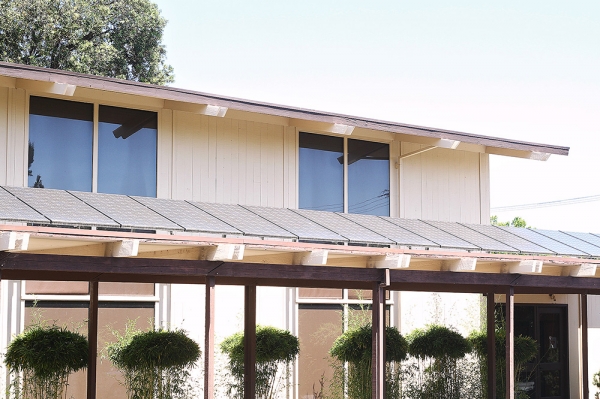
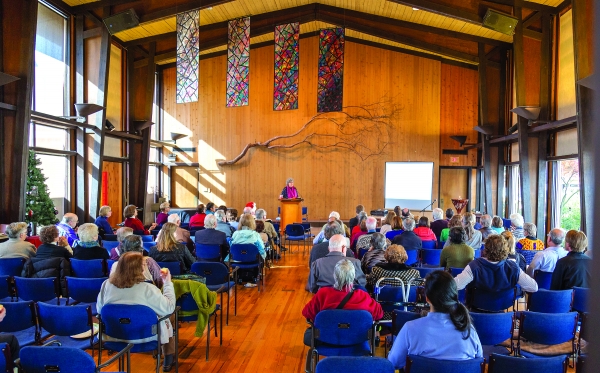
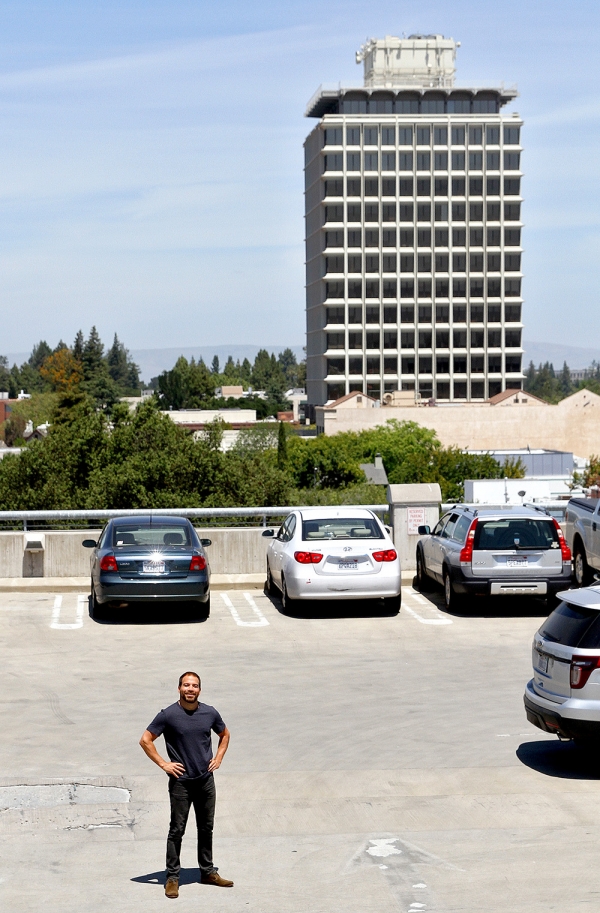
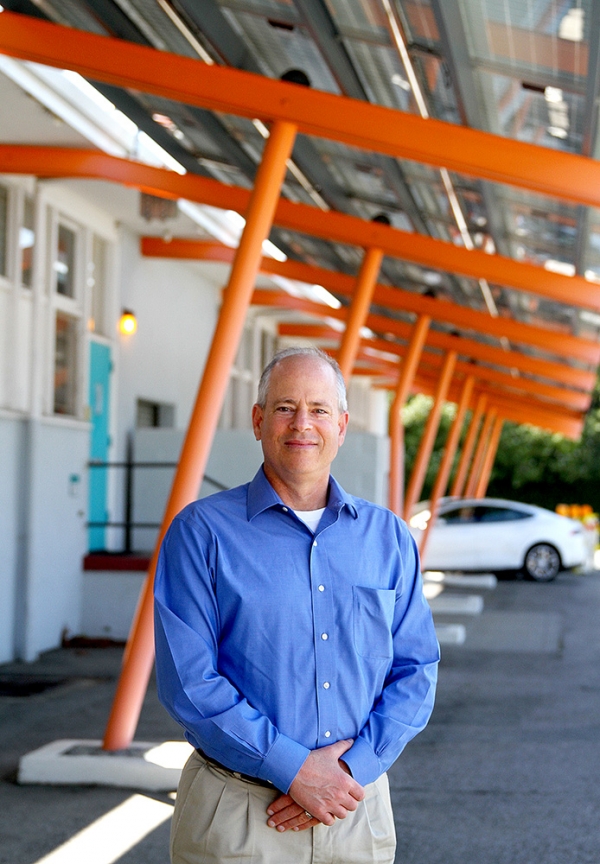
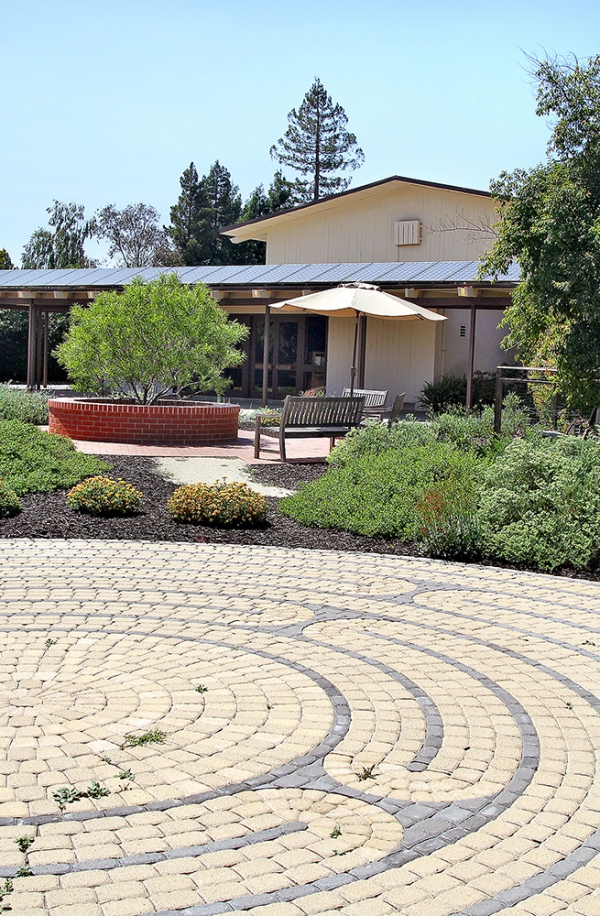
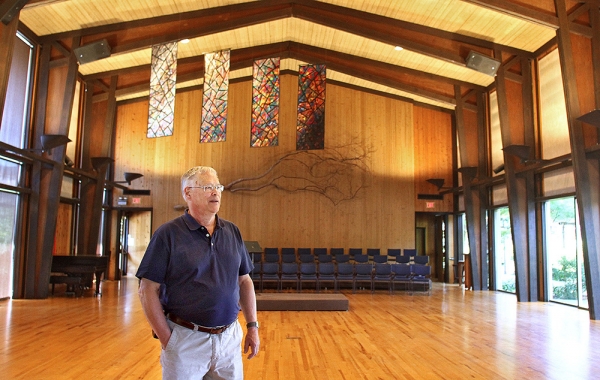
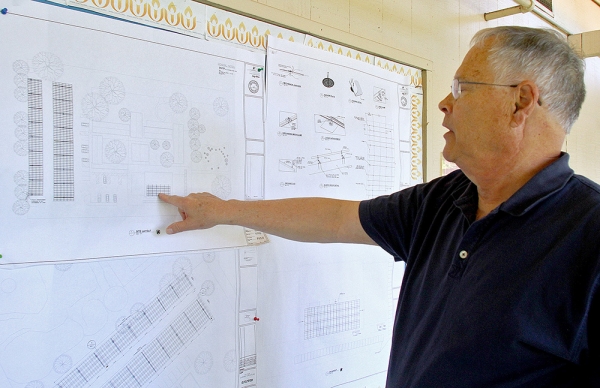
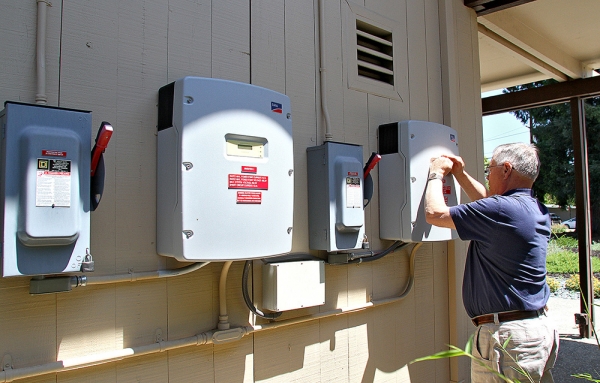
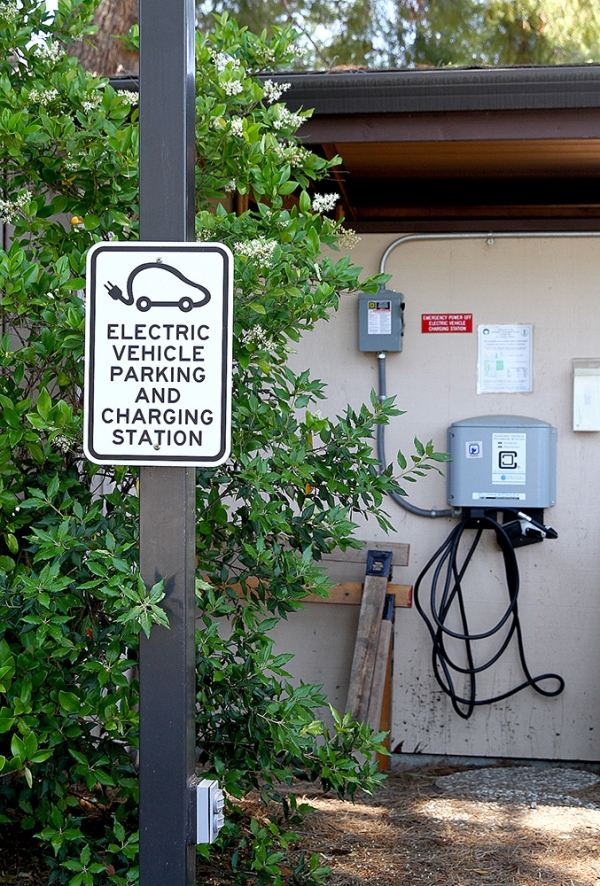
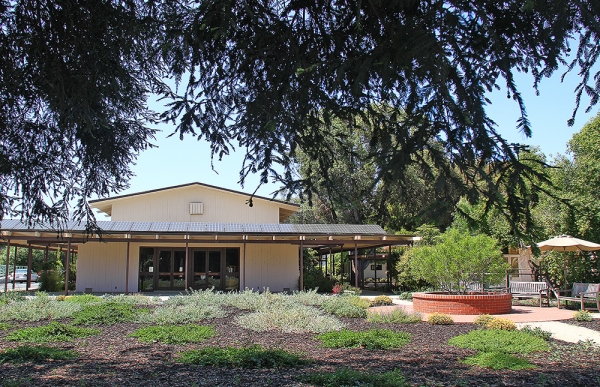
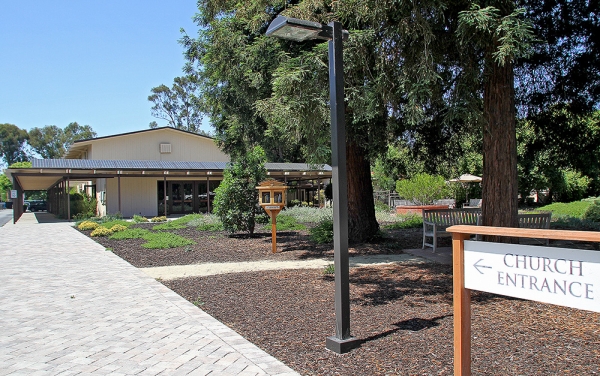
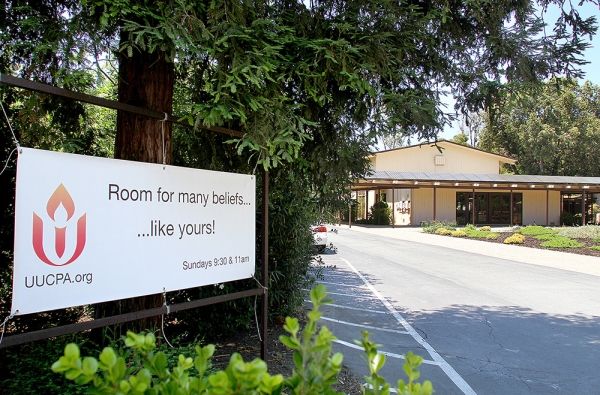


Comments
Registered user
Leland Manor/Garland Drive
on May 20, 2016 at 10:48 am
Registered user
on May 20, 2016 at 10:48 am
Kudos to the church! They think globally and act locally.
Fairmeadow
on May 20, 2016 at 12:45 pm
on May 20, 2016 at 12:45 pm
So proud of UUCPA. Other congregants in addition to Sven, Craig & Vanessa who helped bring this project to reality were Bill Hilton of Sunnyvale, Wynne Furth, Richard Cassel, Justine Burt, Jeralyn Moran, Thida Cornes of Mountain View, and so many many more! The unanimous vote that day at UUCPA to support the project was inspiring.
Adobe-Meadow
on May 20, 2016 at 1:04 pm
on May 20, 2016 at 1:04 pm
I like this church. The members and leadership actually PRACTICES being good tolerant people, not saying they do then acting in hateful ways.
Leaders of other churches in the area should come see how it is done.
Midtown
on May 20, 2016 at 2:28 pm
on May 20, 2016 at 2:28 pm
[Post removed; wrong topic]